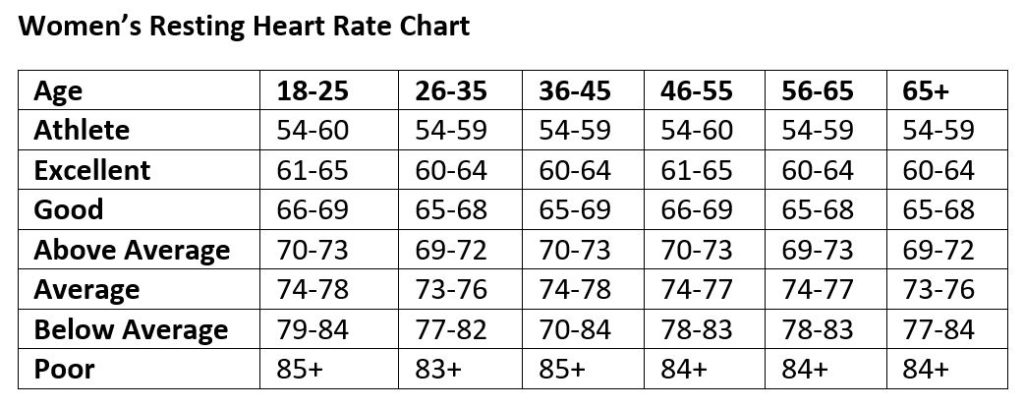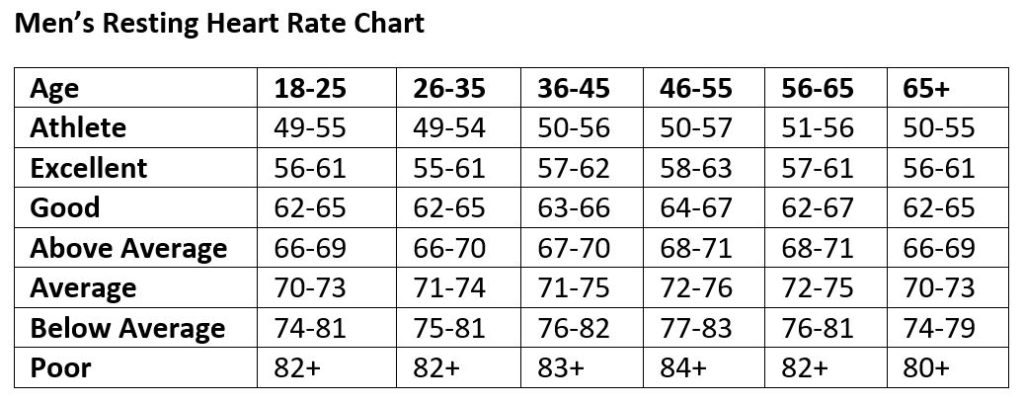Measuring your fitness level is a great way to motivate yourself and a great way to have an idea of your cardiovascular health.
What is cardiovascular fitness?
The ability to do sustained exercise for a period of time at moderate to high intensity levels is directly related to the health of your cardiovascular system (heart and blood vessels) as well as muscle conditioning. When we do aerobic exercise we increase our breathing rate and heart rate and our muscle cells use oxygen to make energy (ATP). Our cardiovascular fitness level is the ability to circulate blood, and therefore glucose and oxygen, to our muscles, as well as the ability of the muscles to use the glucose and oxygen to make ATP. When the muscles can no longer produce enough ATP to keep the muscles contracting, the muscle become fatigued and you can’t continue the activity. How fit you are determines how much physical exercise you can do before your muscles fatigue.
Let’s compare Joe and Fred, they are both 45 years old. Let’s suppose Joe does parkrun every Sat and runs 5km in about 25-30 min. Fred doesn’t ever run. Fred is a bit of a couch potato and has a few extra pounds around his midsection. Suppose Fred decided to try a parkrun but after 1km he just couldn’t catch his breath and his legs were burning and he had to stop running and walk for a bit. Fred hit his maximal cardiovascular level and experienced fatigue sooner than Joe, so Joe has a higher level of cardiovascular fitness compared to Fred.
Cardiovascular fitness depends on a few key factors:
- The heart – the ability of the heart to contract strongly enough to eject a significant amount of blood with each heart beat (called stroke volume), plus the ability to increase in rate. Stroke volume X heart rate = cardiac output. If Joe and Fred both have approximately 5L of total blood volume, their resting cardiac output is approximately 5L per minute because we circulate all of our blood volume approximately once every minute at rest. During exercise, Joe can likely easily triple his cardiac output to be around 15L per minute whereas Fred probably can only increase his to about 10L per minute. Since Joe’s muscles can receive more blood, he can produce more ATP and will fatigue slower than Fred.
- Blood vessels – Our vascular system is the transport system that carries the blood from the heart to the muscles and then back to the heart. If our blood vessels are healthy then they are distensible (stretchy) and can accommodate more blood volume. If we start to develop atherosclerosis then blood vessels start to contain plaque build-up, and will become less distensible and then less blood can reach the muscles, so they will fatigue faster.
- The muscles – the ability of the muscles to utilize the glucose and oxygen efficiently to make ATP (including the heart muscle). Muscle cells have organelles called mitochondria that produce ATP, low numbers of these organelles from lack of exercise means that less ATP can be made. Someone that exercises on a regular basis will have more mitochondria and will be able to efficiently use oxygen to make more ATP.
How fit are you?
Test 1: Measure your resting heart rate (HR)
Find your radial pulse, located between your radius bone on the thumb side of your forearm and the tendon in the middle of your wrist. Count each pulse you feel for 15 seconds and then multiply that by 4 to get your HR per minute.
A lower resting HR generally indicates better cardiovascular fitness because the heart doesn’t have to pump as much to circulate the amount of blood your tissues need. Here are some resting heart rates for men and women based on age. Look and see where you stand between poor and athlete.


Test 2: Measure your heart rate recovery time
The ability of your heart to recover after intense exercise is an excellent indicator of your cardiovascular fitness. The quicker your heart rate decreases after intense exercise, the better your cardiovascular health. This test involves a few minutes of warming up with 2 minutes of high intensity exercise.
First, calculate your estimated maximum heart rate.
A common method is to subtract your age from 220 (any heart rate above 220 becomes very inefficient and is usually not possible to reach). Fred is 45 years old so he would have a maximal heart rate of approx. 175.
Next, look at the chart below and find your age and then figure out what heart rate correlates with your 85% max (the green performance zone). Fred’s would be about 148.

You can do this activity on a treadmill or stationary bicycle at a gym where you can quickly and easily measure your heart rate using the HR monitors on the equipment or you can do this by running or cycling outside using a Fitbit. If you are not used to doing cardio exercise then it is beneficial to use something so that you can monitor your HR during the exercise so you know that you are in the 80-85% range of intensity. You want to aim be in the green performance zone if possible but you also need to sustain it for 2 minutes so you have to use your best judgement.
Let’s suppose you are going to use a stationary bicycle at the gym. Ride in the yellow zone shown on the chart for at least 5 minutes to warm up. Then spend a couple of minutes increasing the intensity and then drop back and ride easy until your breathing is normal but you feel warmed up and ready to ride at a high intensity. When you are ready, increase your intensity and try to get close to 85% of your maximum HR and hold that for 2 minutes. Warning, this is high intensity exercise and you will become out of breath and feel lactic acid in your muscles. If you increase the intensity above 85% then you will likely fatigue sooner than 2 minutes. If you are running outside then choose a pace that is maximally difficult but you can hold it for 2 minutes.
When the 2 minutes is up then you are going to take your pulse (manually like in step 1 or using a HR monitor) immediately after the exercise and then again 1 and 2 minutes later. How long it takes your HR to return to normal is a very good indicator of cardiovascular health. The quicker you return to normal, the healthier your cardiovascular system is. Someone with good cardiovascular fitness will recover by 15-25 beats per minute within the first minute. Athletes can have a decrease in HR by 30-60 seconds per min. A study in the New England Journal of Medicine showed that if heart rate only decreases by about 12 beats per minute or less then you have a significantly increased risk of cardiovascular disease and it is a powerful predictor of overall mortality.
Another way of looking at your numbers is to subtract your 2 min HR time from your HR immediately after the exercise. See the following chart, the numbers are seconds. How does your biological age compare to your calendar age?

Test 3: The Cooper Test
This is a 12 minute run. The farther you can run in 12 minutes, the fitter your cardiovascular system is. Here is a chart that shows standards for males and females. An average walking pace is about 1 km in 12 minutes, or 5km per hour.


If you did poorly on the Cooper test, how do you know if that is because of your cardiovascular system or if it is just because maybe you have unconditioned muscles? There is a very easy way to tell the difference!
If your limiting factor is your muscles then you would feel your muscles burning with lactic acid and they would be too tired to continue running but if breathing feels easy, then you need to work on muscle fitness and your cardiovascular system is likely ok.
If your limiting factor is that you couldn’t catch your breath then you need to work on your cardiovascular fitness.
Here is a website that lists many other kinds of fitness tests that you can try at home.
Fun Fact: 1 pound (0.45kg) of muscle burns 3Xs more calories than 1 pound of fat.
Fun Fact: Your heart beats about 100,000 times per day pumping over 7000 litres of blood per day.
Recommendations
American Heart Association minimal guidelines – Get at least 150 minutes of moderate intensity (50-75% of max HR) per week or 75 minutes of high intensity (70-85% of max HR) per week.
Canadian Physical Fitness Guidelines age 18-64 – Accumulate 150 minutes of moderate to vigorous intensity exercise per week in bouts of 10 minutes or more. It is also beneficial to add muscle and bone strengthening exercises using major muscle groups at least 2 days per week.

